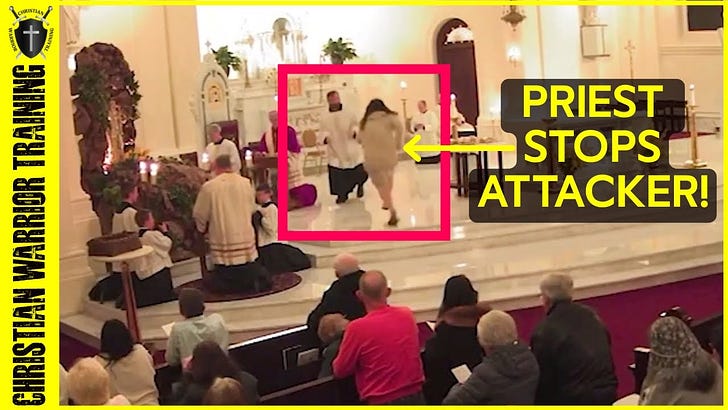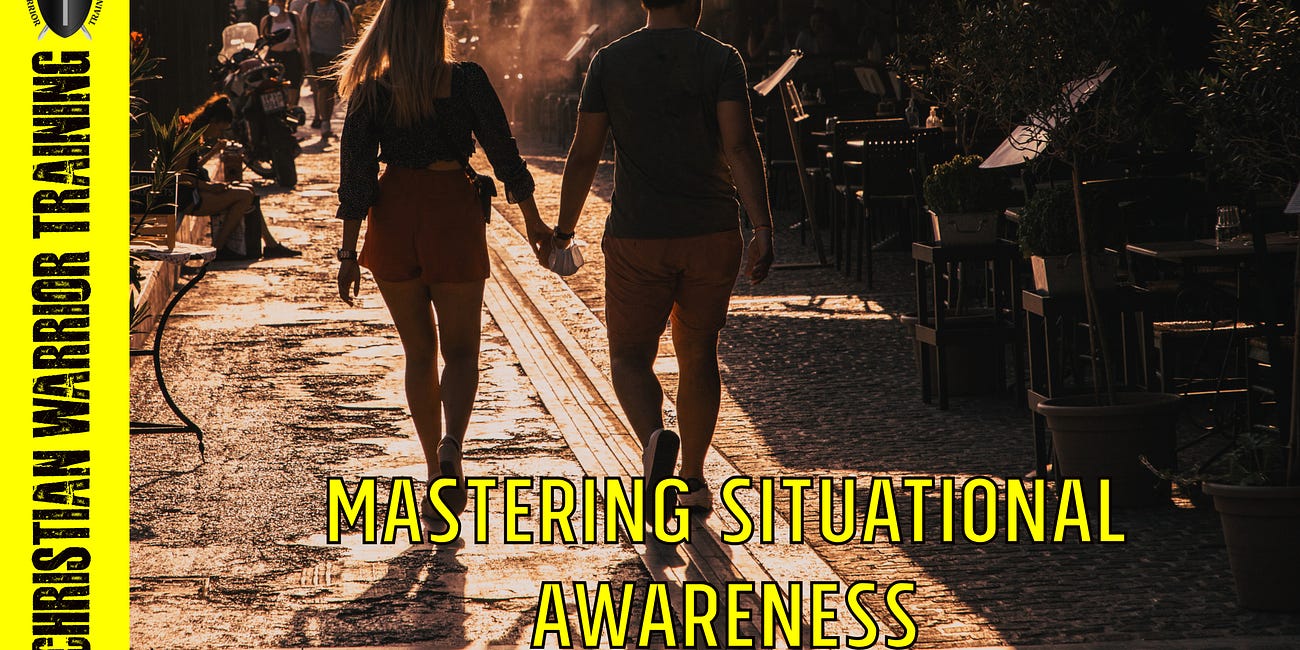Priest Attacked During Service: What You Can Do to Protect Your Church
On November 4th, during a service at Our Lady of Lourdes in Spokane, Washington, a priest was attacked by a man brought to the church by well-meaning individuals who believed he could find healing. About 30 minutes into the service, the suspect lunged at the priest. Thanks to quick reactions from the priest and the church security team, the attacker was subdued, and Spokane PD took him into custody. The suspect was arrested for misdemeanor assault and was also found to have outstanding felony warrants.
You can watch the attack in my video above.
What This Means for Your Church Security
Incidents like this serve as a reminder that violence can erupt anywhere—even inside the sanctuary. While we must keep our churches open and welcoming, we also need to be prepared for threats. Here are some key steps to help protect your church from a similar attack:
1. Establish a Security Team
A trained church security team can be the difference between a controlled situation and chaos. Security personnel should be strategically positioned throughout the congregation, keeping an eye on potential threats while maintaining a welcoming environment. I’ve written numerous articles about this here. Just hit the spyglass icon in the upper right of your screen and search for what you need to get started.
2. Strategic Positioning of Security Members
If you have enough personnel, consider placing a trained individual in the front row who can intercept an attacker before they reach the pulpit. This could be a security team member or even a trained churchgoer (military veteran, martial artist, etc.) who understands situational awareness and can react swiftly. However, a good security officer stationed outside of the main entrance can use good situational awareness to see signs that there may be a problem and be proactive at preventing a crisis.
3. Situational Awareness is Key
Congregants, especially those involved in security, should be trained to recognize pre-attack indicators such as:
Restlessness or fidgeting
Aggressive or erratic movements
Fixated stares at leadership
Sudden changes in behavior
Encouraging a culture of vigilance—without paranoia—will help the church body stay alert to potential threats. You can read my article on situational awareness here.
4. Recognizing Dangerous Mental Health Signs
Many churches welcome individuals struggling with mental illness, which is a vital part of the mission. However, it’s important to monitor behaviors that could indicate a risk of violence. If an individual shows signs of agitation, delusions, or sudden mood swings, stationing a church security member near them can help ensure a quick response if needed.
5. Immediate Response to an Attack
If an individual rushes the pulpit or attacks someone, here’s what should happen:
Quickly subdue the attacker. Use that force necessary to restrain them.
Avoid prone restraint for extended periods, especially if drugs are involved, as positional asphyxia can occur. Instead, restrain them upright when possible.
Call law enforcement immediately. Even if the attacker seems subdued, let trained professionals handle the situation.
6. Handling Live Streams During an Incident
Churches with online ministries should have a protocol in place. If an attack occurs, instruct the media team to shut off the live feed immediately while keeping the recording running for evidence. As I’ve covered before, Al-Qaeda and ISIS have conducted pre-attack surveillance on U.S. churches, and live streams can serve as intelligence tools for those looking to attack. This attack is still available on the church’s facebook page because they didn’t cut the feed.
Stay Prepared, Stay Prayerful
Churches should never become fortresses, but they also should not be soft targets. Training, vigilance, and faith go hand in hand. If you haven’t already, I encourage you to take advantage of the free security training available at ChristianWarriorTraining.com. Just hit the training tab above.
Keep your church doors open. Keep your security sharp. Stay ready. Remember your ABC’s… Always Be Carrying.






